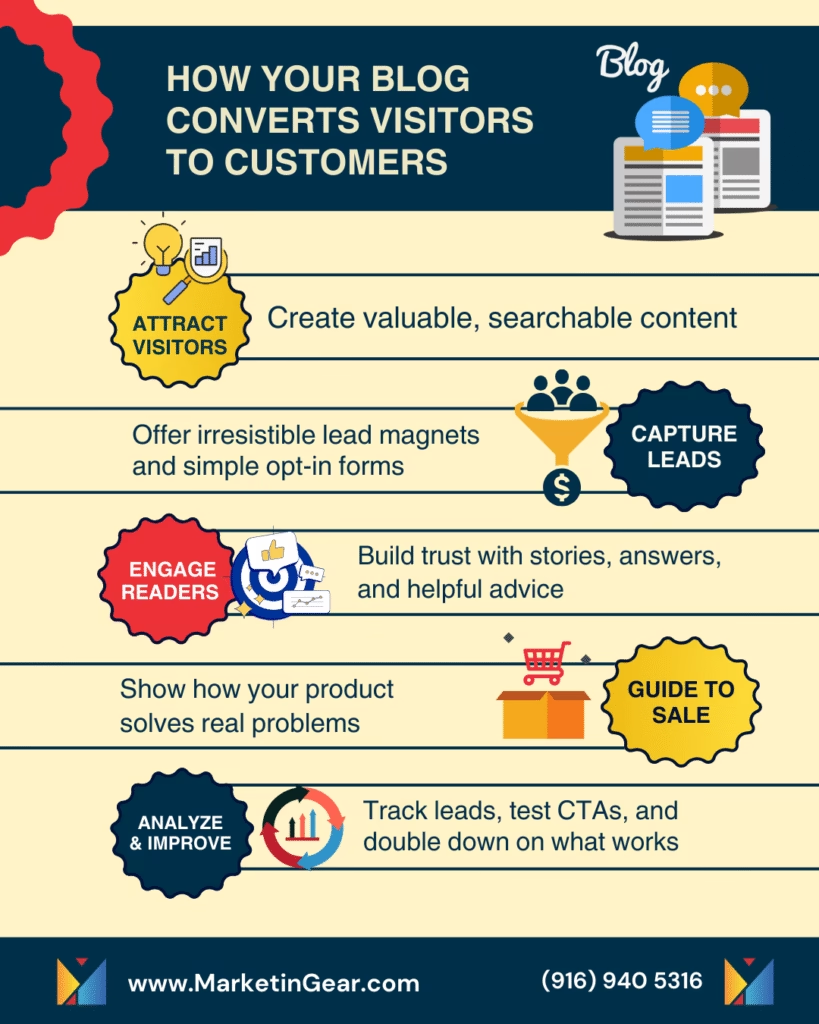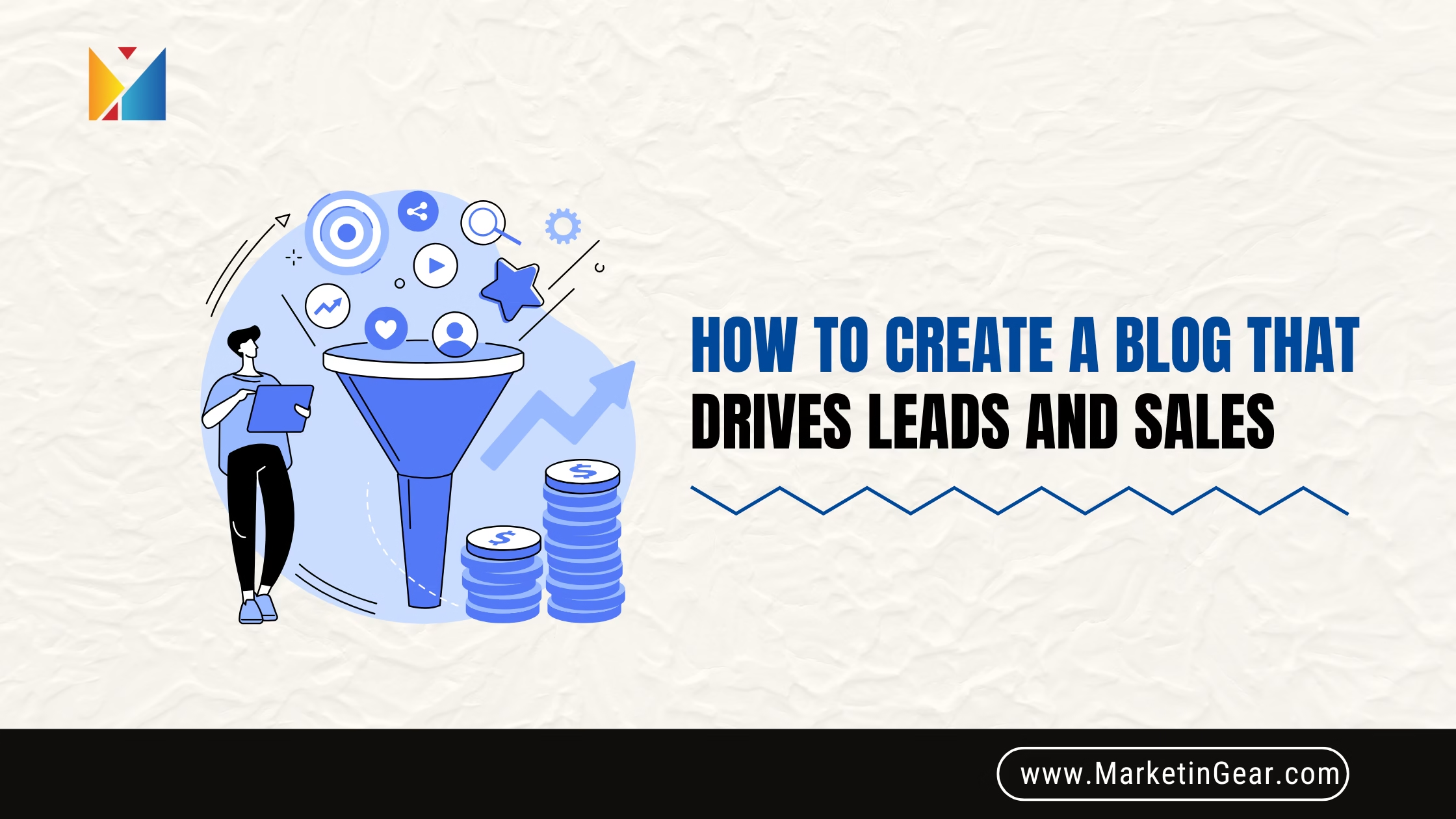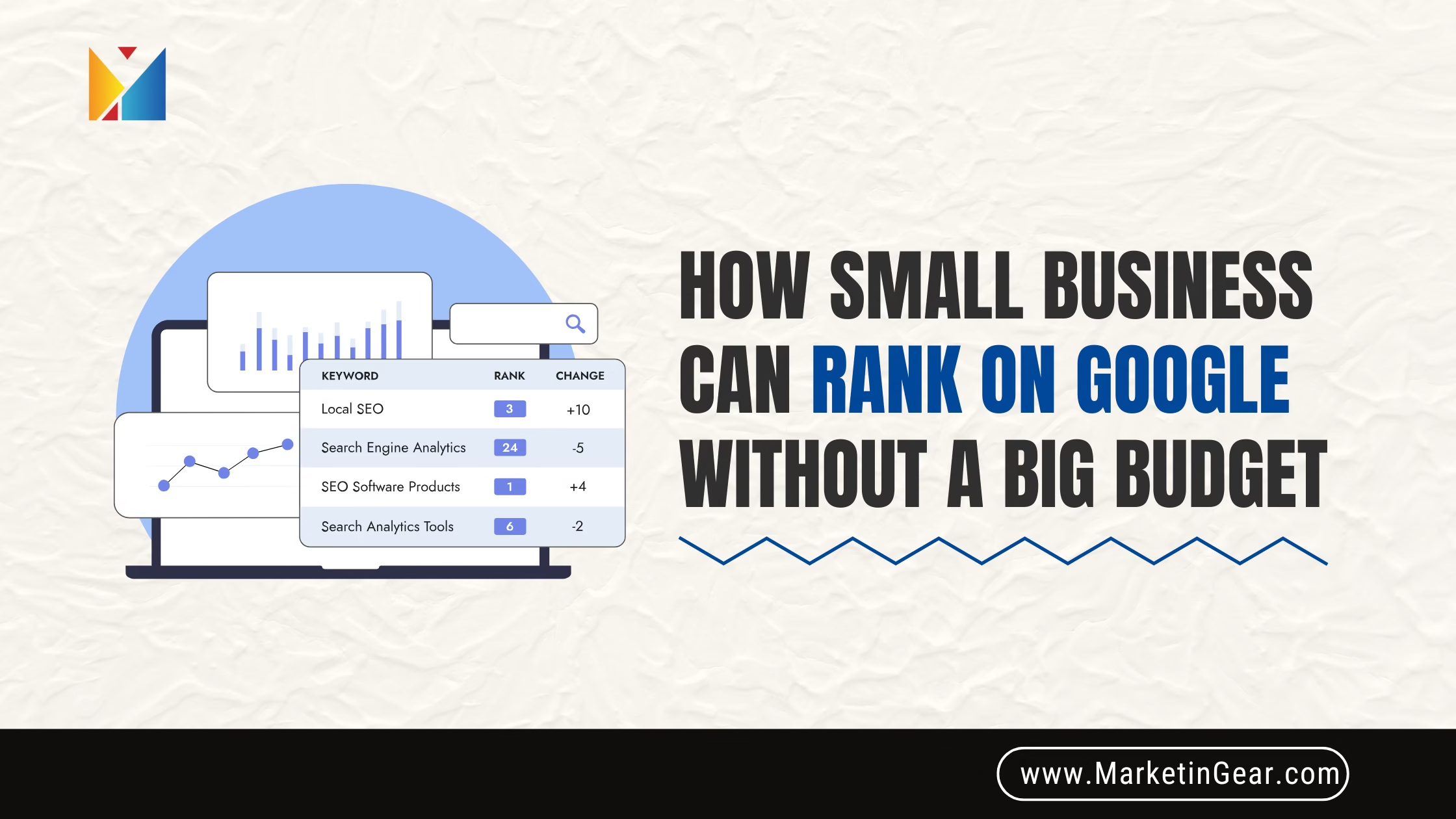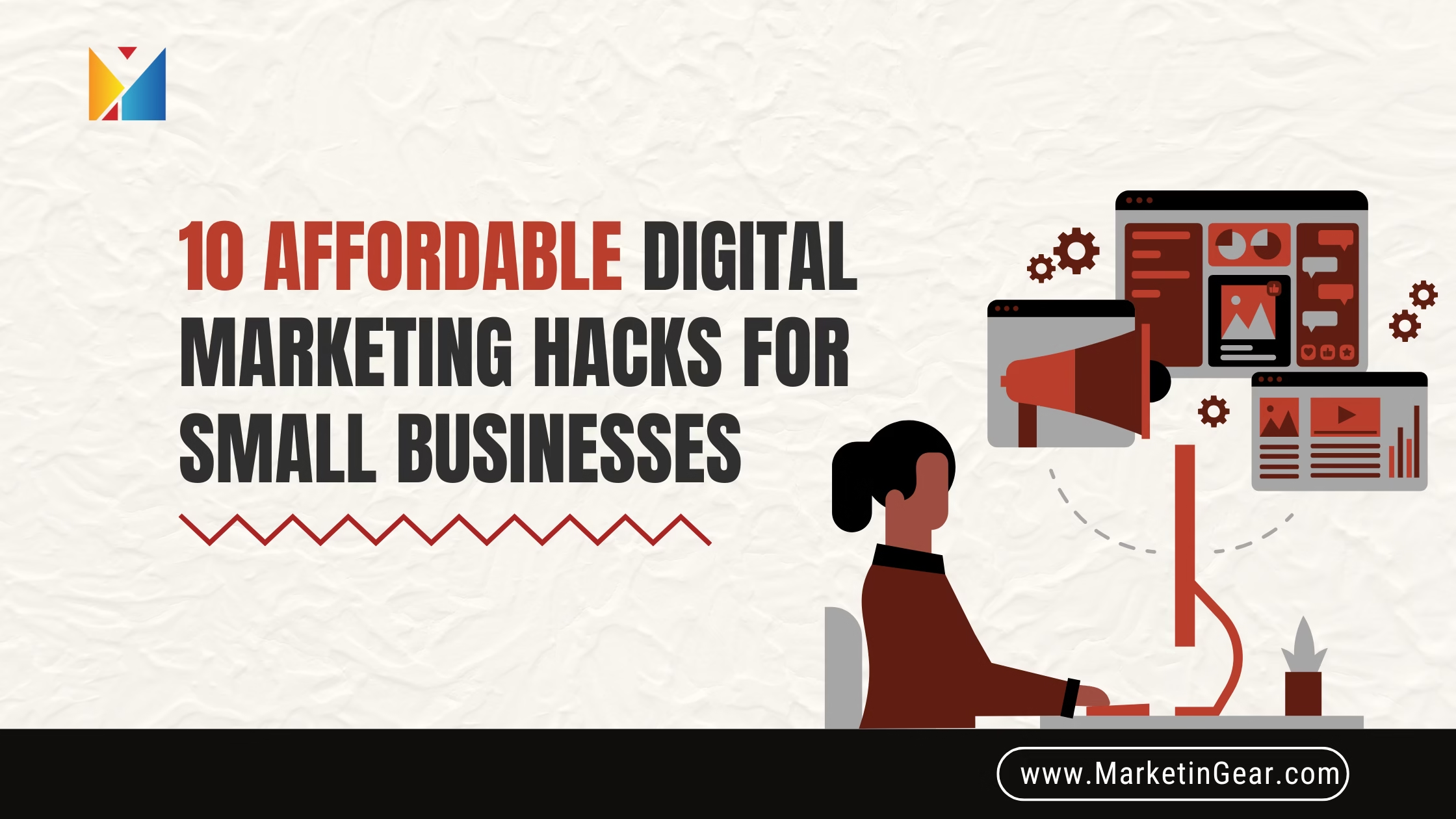Introduction: Why Blogging is the Secret Ingredient for Small Business Growth
If you think blogging is just for foodies and travelers, think again. For small businesses, a blog is like having a conversation with hundreds of potential customers at once. It’s your chance to tell your story, help people, and gently nudge them closer to buying what you offer.
But here’s the real magic: a good blog doesn’t just attract eyeballs. It captures leads and turns readers into customers. It builds trust, answers questions, and keeps your business top of mind—like a neighbor who’s always ready with helpful advice.
In this guide, we’ll walk you through how to build a blog that actually works for your business, bringing you more leads and sales than you thought possible. We’ll break everything down into easy steps, real stories, and practical ideas.

1. Blogging for Lead Generation: Laying the Foundation
Why Leads Matter
Think of leads as the seeds you plant to grow your business. Not everyone who visits your site is ready to buy right now, but many are willing to give you their email in exchange for something valuable. That’s your chance to stay in touch, build trust, and guide them to a sale when the time is right.
Blog Content for Lead Generation
To grab attention and keep it, your blog needs to offer something people want. Instead of random updates, focus on solving problems your audience actually faces.
Blog Post Ideas for Capturing Leads:
- Step-by-step guides (like “How to Choose the Right Product for Your Needs”)
- Helpful checklists (for example, “The Ultimate Small Business Marketing Checklist”)
- Frequently Asked Questions (address real worries or pain points)
- Industry insights or trends explained in plain English
This kind of content positions your business as a helpful expert—not a pushy salesperson.
Creating Lead Magnets for Blogs
Lead magnets are freebies your readers can download in exchange for their email. Think of it as a friendly handshake: you offer value first, and people are happy to stay in touch.
Great Lead Magnet Ideas:
- Ebooks or mini-guides
- Printable checklists or templates
- Free tools or calculators
- Exclusive how-to videos
Make sure your lead magnet matches the topic of your post, so readers feel it’s made just for them.
Blog Opt-In Forms Best Practices
Your opt-in form is like your front door—if it’s welcoming, more people will enter. Keep the form simple (name and email is usually enough), make the benefit clear (“Get Your Free Guide!”), and place it where people will see it (within the post, sidebar, or as a pop-up).
Tip: A/B test your forms by changing the wording or colors to see what works best.
Blog Call-to-Action Examples
Every post should have a clear next step. This is your “call to action” (CTA)—the signpost showing your reader what to do next.
Strong CTA Examples:
- Download your free checklist now
- Sign up for our newsletter
- Get your exclusive discount
Make your CTA feel personal and helpful, not pushy.
Blog Landing Pages for Leads
A landing page is a special webpage focused on getting someone to take a single action—like signing up or downloading a guide. Strip away distractions, keep your message clear, and show exactly how your offer will help.
2. Blogging for Sales: Turning Visitors Into Customers
How to Increase Sales Through Blogging
Once you have someone’s attention (and maybe their email), it’s time to guide them toward a purchase. This doesn’t mean every blog post is a sales pitch—instead, your content should answer questions, ease doubts, and show how your product solves real problems.
Story Example:
Imagine you run a local coffee shop. Instead of just blogging about your latest flavors, write about “How to Brew Cafe-Quality Coffee at Home”—and subtly explain why your beans make the difference.
Blog Content That Converts
Use real customer stories, case studies, and testimonials to show that your solution works. People trust what others say about you more than what you say about yourself.
Sales-Driven Blog Topics:
- Product comparisons
- Before-and-after customer stories
- Detailed reviews
- How your service helps in everyday life
Blog Funnels for Selling
A blog funnel is a series of posts and actions that gently guide a reader from curiosity to purchase. Start with helpful content, offer a lead magnet, follow up with targeted emails, and invite the reader to try your product or service.
Simple Funnel Example:
- Reader finds a helpful blog post
- They download your free guide (lead magnet)
- You send follow-up emails with more tips and gentle offers
- They become a customer
Promoting Products on Blogs
Highlight your products naturally within your posts. Show them in use, explain their benefits, and share honest feedback from real users. Link to product pages whenever it feels natural.
Affiliate Marketing with Blogs
If you recommend products you love (even if they’re not yours), you can earn a commission through affiliate links. Be honest and transparent about these relationships. Only promote things that truly help your readers.
Blog Copywriting for Sales
Your writing style matters. Use simple, friendly language. Focus on the reader (“you”) more than yourself. Paint a picture of the outcome they want. Keep paragraphs short for easy reading on mobile.
Blog Post Structures That Sell:
- Start with a relatable problem
- Show the solution step-by-step
- Address common objections (“What if it doesn’t work for me?”)
- End with a strong CTA
3. SEO for Blogs to Drive Sales and Leads
Keyword Research for Business Blogs
Before you write, think about what your ideal customers are searching for. Use free tools like Google Keyword Planner, Ubersuggest, or Answer the Public to find popular phrases.
Focus on “long-tail keywords”—specific phrases that show clear intent (like “best marketing tools for small business”).
SEO Strategies for Lead Generation Blogs
Include your main keywords in your headline, first paragraph, and a few times naturally throughout the post.
Don’t overdo it—write for people, not just search engines.
On-Page SEO for Conversion Blogs
Use descriptive headings (H2 and H3 tags), short paragraphs, bullet points, and internal links to related posts. Add alt text to images for accessibility and SEO.
Internal Linking for Lead Generation
Guide your reader deeper into your site by linking related articles together. For example, after a post about email marketing, link to your “best email marketing tools” review.
SEO Content Clusters for Sales
Create a group of related posts around a main topic. This signals to Google that you’re an expert, and it helps readers find everything they need.
Blog Meta Descriptions and Titles for Clicks
Write clear, compelling meta descriptions (the short summary that appears in search results). Make your titles specific and benefit-focused (“5 Ways to Get More Customers with Your Blog”).
Optimizing Blog Posts for Conversions
Add CTAs throughout your post (not just at the end), use eye-catching buttons, and test different offers. Check your analytics to see what’s working.
4. Content Marketing Strategy for Sales Blogs
Blog Content Calendar for Sales
Plan your posts in advance. Mix evergreen topics (always relevant) with timely posts (seasonal sales, industry news).
Keep a simple spreadsheet with dates, topics, keywords, and offers.
Blog Editorial Planning
Assign responsibilities, set deadlines, and keep a steady publishing schedule. Consistency builds trust with both readers and search engines.
Evergreen Blog Content for Sales
Write posts that don’t go out of date—“how-to” guides, resource lists, and industry basics. These keep bringing in traffic long after you publish them.
Blog Content Promotion Techniques
Share every post on social media, in your email newsletter, and in relevant online communities.
Repurpose blog posts into videos, infographics, or podcasts to reach more people.
Repurposing Blog Content to Drive Leads
Turn a popular post into a downloadable guide. Break up long posts into social media tips. Turn a customer case study into a YouTube video.
Blog Series to Nurture Leads
Write a series of connected posts that build on each other—like a mini-course. At the end, invite readers to sign up or schedule a call.
Using Case Studies in Blogs
Share real stories about how your service or product solved a problem for a customer. Use quotes and data for credibility.
Guest Blogging for Lead Generation
Write posts for other blogs in your industry, with a link back to your site. This exposes your business to a new audience and builds valuable backlinks.
5. Analyzing Blog Performance for Leads and Sales
Blog Analytics and Metrics
Use Google Analytics to see which posts attract the most visitors, which convert best, and where people drop off.
Track sign-ups, downloads, and sales from each post.
Conversion Rate Optimization for Blogs
Test different headlines, CTAs, images, and offers. Small tweaks can make a big difference.
Tracking Blog Leads
Use email marketing tools (like Mailchimp or ConvertKit) to track how many people sign up through each form or offer.
Measuring ROI from Blogging
Compare the time and money you spend on blogging to the leads and sales it generates. This helps you focus on what works and improve what doesn’t.
Blog KPI Tracking
Set clear goals: more sign-ups, more product demos, higher sales. Check your progress every month.
Improving Blog Engagement for Leads
Encourage comments, ask questions, and reply to readers. Engaged readers are more likely to become leads and customers.
Identifying High-Performing Blog Content
Double down on topics that get results. Update or republish your best posts to keep them fresh.
Conclusion: Take the First Step Toward Blogging Success
Building a blog that drives leads and sales is not about luck or guesswork. It’s about understanding your audience, offering real value, and making it easy for readers to become customers. With clear steps, consistent effort, and a human touch, your blog can become the engine that powers your business growth.
Ready to turn your blog into a lead and sales machine?
Partner with MarketinGear today. Our team knows exactly how to create, grow, and optimize business blogs that drive real results. Don’t wait—your future customers are searching for you right now.




